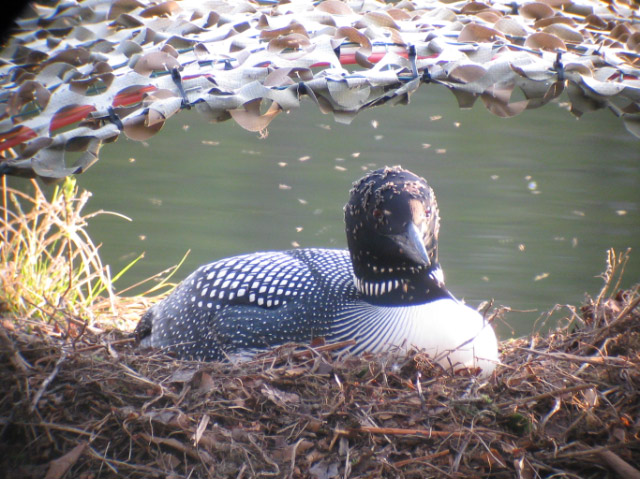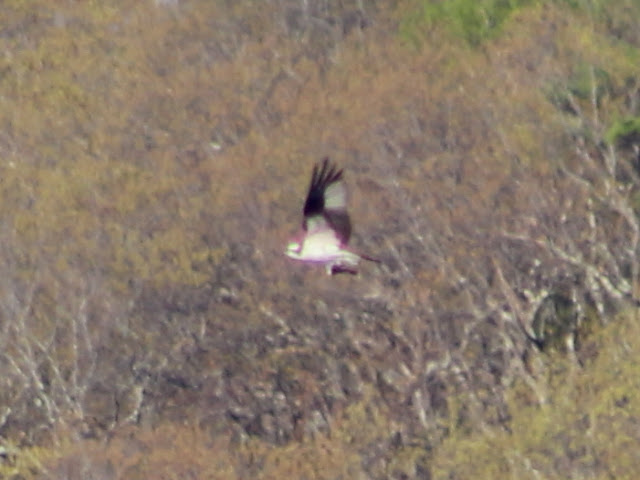The cool, wet weather that has engulfed much of the country this week has certainly slowed the progression of spring. As of today there is still barely a hint of lemon-lime below the low clouds hanging in the hills of New Hampshire's Lakes Region.
 |
| Only a few pale green leaves at this point |
 |
| Clouds veil Crockett's Ledge |
Some of the early flowering trees are putting out their blossoms regardless of the weather, and it being so cool we should be able to enjoy them longer than usual. Dogwood, Hobblebush and Honeysuckle all made their debut this week.
 |
| American Fly Honeysuckle (Lonicera canadensis) |
I also saw an interesting tree that I had never seen before, and it took me a long time to identify it.
 |
| The beautiful yet greatly conflicted Boxelder (Acer negundo) |
I finally determined that it is a boxelder. It seems to be a rather conflicted tree, called an elder, considered a species of maple, and with multiple common names that reference three different type of trees: boxelder, boxelder maple, maple ash, and ash-leaved maple. [Ref:
Wikipedia] The boxelder is not indigenous to New Hampshire but has been naturalized here and planted frequently as a shade tree due to its fast growth. [Ref: "Eastern Forests," Ann Sutton, Knopf, Inc, 1985]
Along with the budding trees come the insects that feed on them. One of the prettier ones is the aptly named Spring Azure.
 |
| The Spring Azure (Celastrina ladon) blends into its surroundings when not flying |
We saw several along the Winnipesaukee River Rail Trail between Tilton and Franklin. It's a pretty blue butterfly when airborne and the inside of its wings are exposed, but when it lands it becomes almost invisible, even if it lands right by your foot. Or, maybe, on your foot.
 |
| That's the toe of Linda's sneaker |
It's a common butterfly this time of year in many habitats from woodlands to clearings to roadsides, and it feeds on the early flowering trees such as dogwood and viburnum.
With the spring runoff the Winnipesaukee River was raging with rapids.
 |
| The Winnipesaukee River along the Rail Trail, flowing at over 1900 cubic feet per second |
Unfortunately, there are some less savory characters that also arrive to feed on the trees, including the Tent Caterpillars, which are plentiful now.
 |
| Tent caterpillars waiting for more leaves to feed on |
Plants aren't the only victims of the arriving insects - mammals, including humans, are subject to the tiny deer tic (though actually arachnids, not insects) which have made their presence known. These are so tiny it is best to use a proven bug spray on your shoes and clothing when you're out.
 |
| An arachnid in the palm of my hand |
There has been a sighting of our banded female loon, and I just received an update from the Loon Preservation Committee saying that no, the banded loon seen earlier this spring on Lake Massebesic (see
April 23 post) was not our loon. But it is great that our pair has now returned! They took a fishing tour through our end of the lake on Saturday, when I saw them for the first time. But for several days prior a single loon, likely the same one that's been on the lake for three years now, has been living in the cove. We watched it groom itself in hopes of looking sharp to a potential mate.
 |
| Be careful with that beak! |
I took some video to show how it travels around in circles as it paddles with one foot while grooming its underside.
Grooming Video Swimming in Circles
And after all that hard work, a nice nap was in order.
 |
| A quiet afternoon means nap time on Lake Wicwas |
I'm sure the trees are about ready to explode at this point, and just one warm sunny day is all it will take for them to burst out and paint the world green again.
 |
| Red Maple ready to explode |





















































